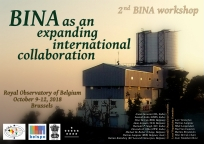Speaker
Mr
Rajesh Kumar Dubey
(Researcher and Principal)
Description
Galaxy collision is an important event in astrophysics and opens doors for many unanswered questions. The collision between NGC 1232 with a dwarf galaxy or NGC 5256 is another example of merging of two galaxies. APR 256 is another example of merging of the two spiral galaxies. These collisions takes place for millions of years and the statistics changes with time. However, observations show that these events may result in very high temperatures of the order of a few MK, covers and spread over very large areas of the order of few kpc in diameter, and moderate to high luminosity. Depending upon certain factors the collision can be observed under X-RAY band or gamma ray bands. By studying these collisions, the prediction can be made about the shape, size, temperature, expansion, luminous afterglow, etc. of the resulting galaxy. For example, two spiral galaxies can merge to form an elliptical galaxy. The behaviour of present such events can help in predicting the future events.
Primary author
Mr
Rajesh Kumar Dubey
(Researcher and Principal)

